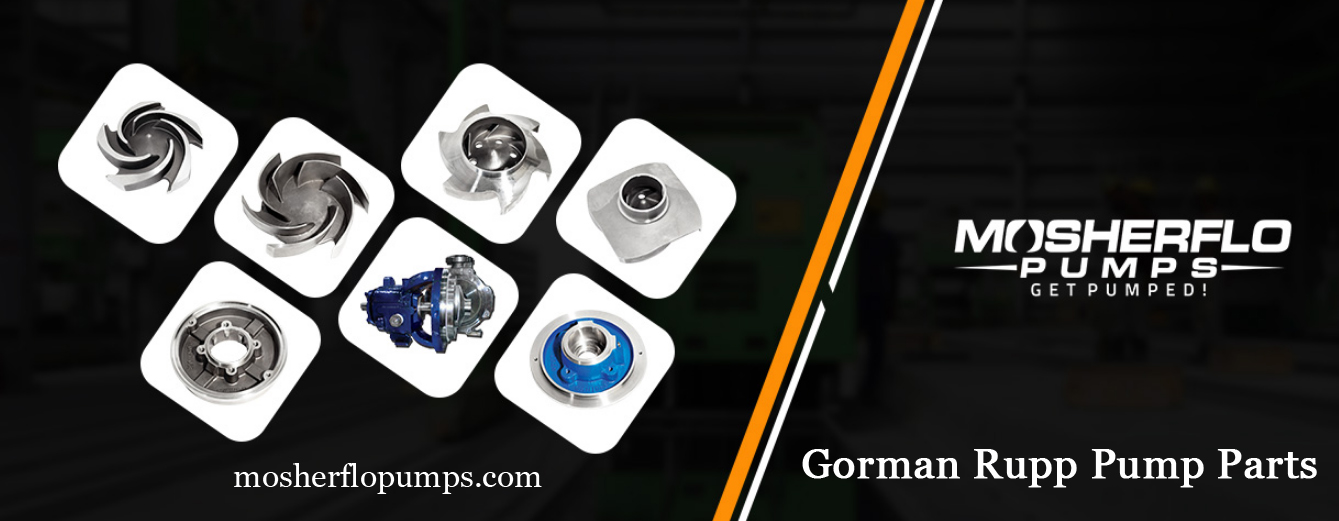Commons Signs of Ineffectiveness in a Self-Priming Pump
A visible distinction in pump circulation
Pay attention to the discharge flow Has it visibly decreased? Is it taking your pump longer to do the exact same work than it made use of to? The slowed down circulation may be brought on by a flattened suction hose pipe lining, a dripping gasket, a plugged suction line or a broken or used impeller or use plate.
To identify the source of any kind of decline in circulation, the discharge pressure as well as the suction vacuum must be gauged while the pump is running. If the pump discharge pressure and also suction vacuum were gauged at start up, the most recent analyses must be compared to the initially taped analyses. When fixing any kind of Gorman Rupp Pump Parts and also system, comply with the high unusual reading taken previously. A greater than regular discharge pressure analysis will certainly indicate a reduction in suction vacuum, and could be an indication of a clogged up or partly clogged discharge line, a shut valve, air unable to leave or any kind of blockage outboard of the point the gauge was set up right into the discharge line. It prevails practice to install gauges about two to four pipe diameters from the pump.

Both gauges can additionally lower. If they do, the trouble lies between the installed locations of the evaluates. In this situation, the problem is within the pump. A clog at the eye of the impeller, wear, vast clearances and also air caused into the suction line might all trigger both scale readings to lower. Keep in mind that gauge readings generally stammer back and forth. Yet once again, adhere to the issue to the greatest unusual scale analysis.
The pump isn’t re-priming as swiftly as it as soon as did. Many typically, slower re-prime can be credited to excessive face clearance. If this is not the reason for your stagnation, check the following:.
Is the seal dripping?
Is all equipment at the gaskets tight?
Is the cutwater area of the volute badly used?
Is the re-circulating port blocked?
A maximum vacuum check can be carried out to determine the location of the trouble. Fill the pump with the minimum amount of water than what the volute housing normally maintains for re-priming. To do so, merely get rid of the suction flap valve, priming the volute housing and also energizing the pump. After the pump achieves vibrant procedure, transform the pump off as well as enable the liquid in the pump to return to the sump.
Whatever product remains in the volute case is the minimum left for a re-prime cycle. Set up a vacuum cleaner gauge on the suction side of the pump and also shut a valve in the suction line outboard of the scale. If there are no valves in the suction line, a solid gasket without a within size opening may be installed in a pipe joint to produce a “valve” effect. Stimulate the pump and inspect the vacuum gauge. The pump will draw a vacuum cleaner against the shut shutoff or strong gasket. This analysis is the comparable to the pump’s lift capabilities. If a vacuum cleaner scale calibrated in inches of mercury (Hg) is made use of, multiply that reading by 1.13 to transform to feet of water.
The pump is making extreme noise
If your pump sounds like a bunch of marbles rattling in a canister, this may be an indicator of cavitation– as well as could be brought on by a suction lift that’s too expensive, a suction hose that’s too long, plugged or has a collapsed lining, a stopped up strainer, a combination of any of these, or probably an issue on the discharge side of the pump. Failing bearings can additionally create extreme noise. Noise should be qualified as mechanical or hydraulic noise. Run the pump briefly without water. If the sound is no longer existing, the sound is just one of a hydraulic nature. If the sound is present after eliminating the product, the sound is mechanical. Again, a quality set of gauge readings will direct your focus to the problem side of the system if the noise is deemed to be a hydraulic noise. Goulds Pump Parts
The pump is clogging frequently
If a pump’s suction check shutoff is blocked, the strainer may be too large or as well small, or face clearance could be as well large. Conversely, the filter might be embeded mud, connecting the suction side.
The pump is overheating
In this case, very likely, the circulation of liquid into or out of the pump is being restricted. Inappropriate impeller clearance could be reducing re-priming, the suction strainer or recirculation port in the volute casing may be clogged or the pump’s capability to manage air through an air release line, air release shutoff or open finished discharge line may be blocked. Never open a warm pump. Permit the pump to cool to the touch prior to opening. Also after cooling, there might be sticking around pressure inside the volute casing. Buy genuine gorman rupp pump parts Visit: Mosherflopumps.com
